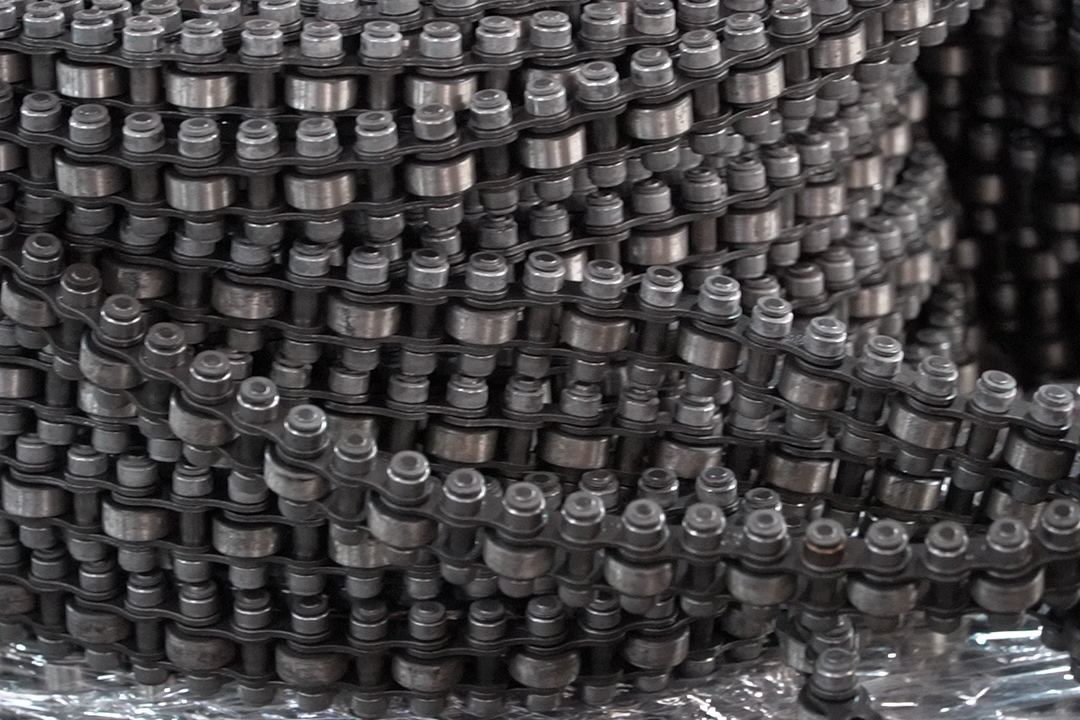introduce
What is a conveyor sprocket?
Types of Conveyor Chains
Selection criteria for conveyor sprockets
a. asphalt
b. Number of teeth
c. Material
d. Hardness
e. Tooth profile
Conveyor sprocket maintenance and lubrication
in conclusion
common problem
Understanding Conveyor Chain Sprockets: Types and Selection
introduce
Conveyor chain sprockets are an essential part of conveyor systems used in a variety of industries. A sprocket is a gear that meshes with a chain or belt to transfer power and motion from one rotating shaft to another. In conveyor systems, sprockets are used to drive chains to move products or materials from one place to another. This article aims to provide an in-depth look at conveyor chain sprockets, including their types and selection criteria.
What is a conveyor sprocket?
A conveyor chain sprocket is a type of sprocket specially designed for use in conveyor chains. Its teeth match the pitch of the chain, allowing it to engage the chain and transfer motion from the drive shaft to the driven shaft. Sprockets are usually made of steel, but other materials such as plastic, aluminum or brass can also be used.
Types of conveyor sprockets
There are many types of conveyor sprockets, each with its own unique design and characteristics. The most common types include:
a. Plain Bore Sprocket – This is the simplest type of conveyor sprocket. It has a round hole that fits snugly over the shaft and is held in place with a set screw. It is typically used in low to medium speed applications.
b. Tapered Bore Sprocket – This type of sprocket has a tapered bore and fits directly on a tapered shaft. It is self-centering and provides a secure fit, making it ideal for high-speed applications.
c. QD (Quick Detachable) Bushing Sprocket – This type of sprocket has a removable bushing that can be easily mounted to the shaft without the need for set screws or other fasteners. It is ideal for applications requiring frequent sprocket changes.
d. Tapered Locking Sprocket – This type of sprocket has a tapered bore with a keyway that allows it to be securely mounted to the shaft using a locking device. It provides a high degree of torque transfer and is typically used in heavy duty applications.
Selection criteria for conveyor sprockets
Choosing the right conveyor sprocket is critical to ensuring smooth and efficient operation of your conveyor system. Some key selection criteria to consider include:
a. Pitch – The pitch of a conveyor sprocket is the distance between adjacent chain pins. A sprocket with the correct pitch must be selected to match the pitch of the chain.
b. Number of teeth – The number of teeth on the sprocket affects the speed and torque of the system. A sprocket with fewer teeth produces higher speeds, while a sprocket with more teeth provides higher torque.
c. Material – The material of the sprocket affects its durability, strength, and resistance to wear and corrosion. Steel is the most commonly used material for conveyor chains
A conveyor sprocket is a mechanical device that uses powered links or chains to help transfer motion from one point to another. A well-designed and properly installed sprocket should be able to withstand continuous use under varying conditions while providing smooth motion and minimal noise levels. The most common applications include industrial plants, material handling systems, automated assembly lines, packaging machinery, and agricultural machinery such as combines.
When selecting a conveyor chain sprocket, it is important to consider several factors, including pitch size (teeth per inch), tooth profile (shape), bore diameter (inner diameter), hub length (shaft length), materials of construction (metal vs. .plastics, etc.), overall size/weight requirements, strength requirements, environmental factors such as corrosion resistance or lubrication requirements. Additionally, you need to consider whether you need standard stock sizes or custom designed parts to meet your specific needs.
It is also important to understand the different types of conveyor sprockets available, which can be broadly grouped into three categories – single chain drive gears, double chain drive gears, and multiple chain drive gears. Single chain drives have fewer teeth than double or multiple chains, but they provide greater torque capacity because by reducing the friction between each link in the power transmission process, the transaction speed is greatly improved. Double chain drives have two identical sets of gear teeth, allowing them to run at higher torque than single chain drives, but require more space around them when mounting them to the shaft. Finally, multi-strand drives with multiple sets of teeth allow for faster acceleration times because more force can be applied without increasing the torque load on other components such as bearings.
Once you have determined which type is best for your application, the next step is to choose between standard off-the-shelf designs and custom solutions, depending on your desired budget, availability, production schedule, etc. Standard stock sizes may not be an exact fit for all applications, so any modifications may be required, or ordering custom parts is recommended if time permits. There are many suppliers who specialize in making custom parts – so do your research before making whatever decision is best for you!
In conclusion, when considering conveyor system components such as conveyor sprockets, understanding the various types and options available plays an important role in finding the right solution that is both efficient and effective to meet performance and budget requirements. Investing some extra time in evaluating all of the above parameters before making a purchase decision will ensure a successful installation and a longer product life!
Post time: Mar-01-2023




